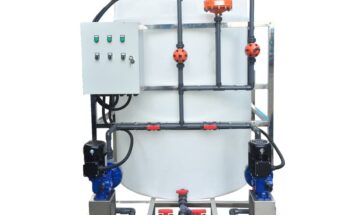Pakistan is an agricultural country. About 25% of Pakistan’s area is under cultivation which accounts for 21.2%GDP and employs about 43% of the labor force. Cotton crop is the hit crop in Pakistan followed by rice and the second most important foreign earning crop of Pakistan. A wide variety of staple, horticultural and cash crops grown in Pakistan reflects serious problems of many types of insect pests. To overcome these problems of pests, Pakistan importing pesticides worth more than billions of rupees every year.
Use of these pesticides has a negative relation with pesticides prices but increase of crops prices had raising its usage graphs in Pakistan. Cotton is worse hit crop of in Pakistan whose losses were 3.1 billion bales according to 1998-1999 reports and its pesticides use accounts for about 62% of the total pesticides used in Pakistan.
Same case is the rice growing in Sindh and Punjab provinces; according to available reports about 70 insect pests are reported attacking paddy crop and causing 20-25% losses to this important foreign exchange earning crop on recurrent basis. In Pakistan 88.3% pesticides are using in Punjab, 8.2% in Sindh, 2.8% in Khyber pakhtunkhwa and 0.7% in Balochistan province. Out of all pesticides used in Pakistan, insecticides comprised 90% of herbicides, 7% fungicides, and 0.2% acaricides and fumigants.
Pesticides use in Pakistan started in nineteen fifties with the import of 250 metric tons with steady increase and this increase reached 2159% in 2004 over 2004.
Increase was manifested by introduction of pest susceptible verities for high crop production like introduction of delta pine cotton which changed the whole scenario leading to serious pest situation in Pakistan and Mexican weed import in large quantities was proved very disastrous in Pakistan.
But after 2004 pesticides usage was reduced to some extent and this decline was attributed to the cultivation of more resistant crops (i.e. BT cotton) and adoption for pest integrated management technology through farmer field schools.
Although an application of pesticides and fertilizers in Pakistan is delivering good results but these results are too low as compared to other developing countries and also facing serious threats to farmers and local communities.
Main source behind low crop production is that majority of farmers are not properly educated and they don’t know about the proper use of pesticides. Their attitudes are very optimistic towards pesticides use they just considering them as a medicine not a source of poison and this overuse is the function of governments relaxed policies which may cause disturbance in the ecosystem.
Over dose is most common in cotton crops where 62% used every year. Another result of lack of awareness is that sometimes farmer using pesticides recommended for vegetables on crops and vice versa and these pesticides then persists for long time contaminating vegetables.
In most remote areas farmers are applying pesticides when the damaged had done and make visible in crops at this stage those applying overdoses of pesticides for desired results. In some cases farmers are unaware about the conditions of field for pesticides use and they just gone through calendar in such conditions results are the loss of non targeted species.
These conditions reflecting relaxed governments policies, lack of knowledge about integrated pest management (IPM). Because majority of farmers considering IPM as hard practices and pesticides use easy.
Most dangerous problem in Pakistan is the handling and storage of pesticides. According to survey in Pakistan 80% farmers storing pesticides in separate room, 5% in animal room, and 1% in sitting room. Only 50% farmers using protective measures during spray and only 19% farmers getting training of pesticides spray and handling.
Leakage in these conditions is most common during carrying and preparation of spray solutions. It is observed that empty containers of insecticides are using by farmers for drinking water, edible oil keeping, and milk and for other domestic purposes or keeping it in courtyard rather than burying them.
These empty containers are more exposed to children’s, may contaminate environment or may be lethal for wild life. Disposal of these pesticides are also a matter of consideration because after use the remaining pesticides in containers are directly thrown in fields or to river and seas.
This may contaminate ground water table, surrounding environment and human as well. Sudden mass fish killing in Rawal Lake in 2004 was believed due to thrown of out dated pesticides by some pesticides traders into lake.
Besides these all the government banned carcinogenic most toxic chemicals like DDT and chlorinated hydrocarbons are also still in use in Pakistan. According to past reports these banned toxic chemicals show 10 fold increased in 1986-1987 over 1981-82. Same case is in India where only one in hundred cities does not care DDT in their body.
Foregoing review indicates that use of pesticides is an important and integral part in crop production practices but its balance use and efficient management is still a question mark for local communities because its overuse on one hand is the main reason of increasing prices of crops and vegetables and on other hand its posing serious threats to all eco systems of environment.
Looking to the role and importance of agriculture in the economy of country and then role of pesticides in agriculture, concern departments need to review and formulate theirs policies. Use of obsolete and banned pesticides, improper storage and reuse of empty containers and lack of awareness should be reduced by awareness and strict policies to safeguard local communities and environment and IPM should be popularized to decrease the use of these pesticides.
This Article is Written by “Sajid Ali” Guest Author At Envirocivil.com
Published At Envirocivil.com




